LAB REPORT
Science and Technology Making Headlines
Nov. 16, 2018

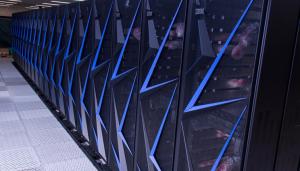
Sierra, one of the fastest supercomputers in the world, will serve the National Nuclear Security Administration’s (NNSA) three nuclear security laboratories. Photo by Randy Wong/LLNL
Sierra reaches higher altitude
The pendulum has now swung back to the United States in the supercomputer arms race.
Since 2013, the U.S. and governments in Europe and Asia have been locked in a constant battle to equip supercomputers with more processing power to claim the ever-shifting title of world's fastest mega-machine. The U.S. reclaimed the top spot in June when the Oak Ridge National Laboratory managed to get its Summit supercomputer online.
Now, the two fastest supercomputers in the world reside within U.S. borders, according to the newest SuperComputer TOP500 List. Summit is now joined by Sierra, a machine housed at Lawrence Livermore National Laboratory and meant for nuclear arms research.
The TOP500 list uses a test called the LINPACK to assess how quickly a machine can do computations in units of work called "flops" for floating-point operations per second. Supercomputers, powerful as they are, usually rank in petaflops, or quadrillions of floating-point operations per second. This year, Summit improved its previous showing with a score of 143.5 petaflops per second. Sierra, on the other hand, ousted a Chinese machine for the No. 2 spot by posting a score of 122.3 petaflops per second.
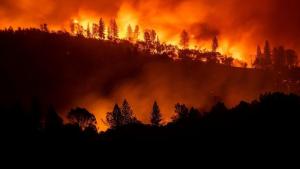
Fires like the Camp Fire in Northern California is on track to be one of the deadliest in the state’s history. Researchers say climate change has lengthened the wildfire season.
California is in the hot seat
Humans can influence the size and severity of wildfires. Human-caused global warming and aggressive wildfire suppression -- the longtime approach of federal and state forest management -- explain the recent spate of deadly fires raging across California, research shows.
Hot and dry conditions increase the odds of wildfires, but even without extreme conditions, rising global temperatures -- the result of increasing CO2 and other greenhouse gas emissions -- make wildfires more likely.
Several studies have found global warming is effectively lengthening the wildfire season by coaxing the early arrival of spring and prolonging the end of autumn.
"The changing seasonal cycle provides powerful and novel evidence for a significant human effect on Earth's climate," said Benjamin Santer, an atmospheric scientist at the Lawrence Livermore National Laboratory.

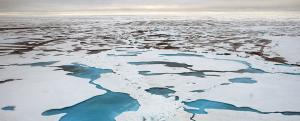
Arctic sea ice loss for the past 37 years is not tied to humans alone. About half of the melting is caused by natural climate fluctuations. Photo courtesy of Karen Frey/Clark University
A force of nature
Humans deserve most of the blame for the environmental changes happening on Earth, but not all of it.
According to a new study by Lawrence Livermore scientists, one major effect of climate change — Arctic ice melt — is due to a combination of human activity and natural climate fluctuations. In fact, the experts behind this study attribute up to 50 percent of the ice lost in the past 37 years to natural climate variables such as El Niños and La Niñas.
Prior to the study, researchers weren’t sure just how large a role natural factors played in Arctic ice loss — estimates ranged from 20 percent up to 50 percent. The team analyzed climate model simulations looking for patterns between Arctic ice melt and anthropogenic (human-caused) and internal (natural) variables.
That pattern-matching technique led them to conclude that natural variables caused between 40 and 50 percent of the ice loss.

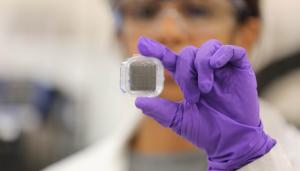
LLNL scientist Swetha Chandrasekaran demonstrates 3D-printed graphene aerogel supercapacitors that result in record-breaking electric charge storage and “remarkable” energy density. Photo by Julie Russell/LLNL
Cellphones, laptops and more could be super charged
A team of Lawrence Livermore engineers have 3D printed an electrode that works in a supercapacitor with the highest electric charge storage per unit of area recorded to date.
The supercapacitor shows significant energy density compared with other types of capacitors. The breakthrough could open avenues to using supercapacitors as ultrafast-charging power sources for devices such as cellphones, laptops and other smaller electronics.
Supercapacitors can be charged extremely quickly, requiring just a few minutes or seconds to reach full capacity, and they retain their performance despite thousands of charging and discharging cycles. But they are rarely used as power supplies because of their relatively small storage capacity.
The research team sidestepped this problem by loading 3D printed graphene-aerogel scaffolds with manganese oxide, a common pseudocapacitive material. (Pseudocapacitive materials store electric charge chemically and exhibit high theoretical energy capacities.). They effectively were able to pack more energy storage capacity into a relatively small area. This addresses the typical energy storage vs. discharging/charging rate tradeoff made with supercapacitors and creates versions with energy densities approaching that of some conventional batteries.

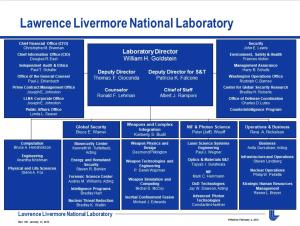
Livermore Lab Report takes a break
The Livermore Lab Report will take a break for the Thanksgiving holiday. It will return Nov. 30.





